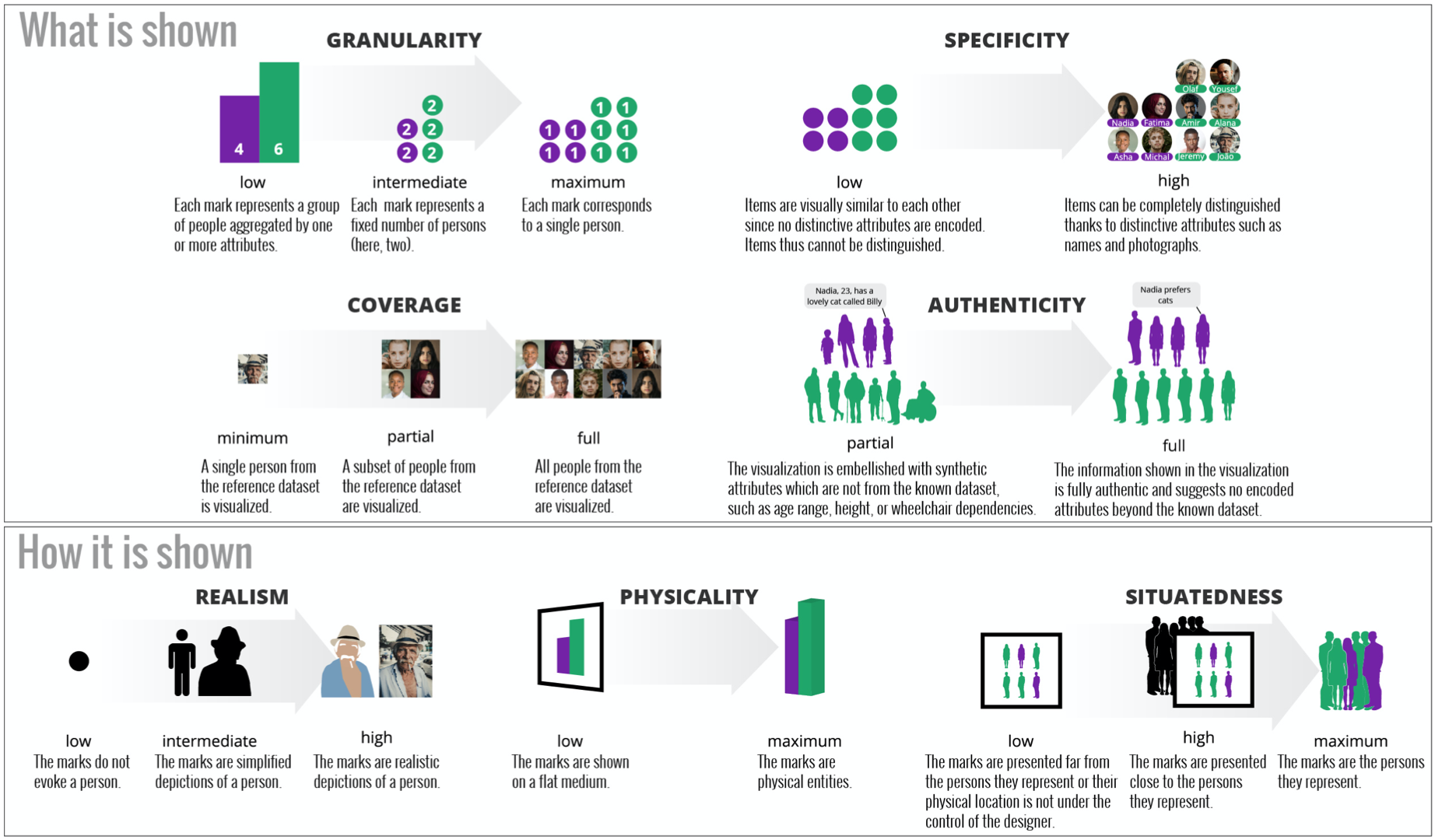Anthropographics Design Space

Anthropographics is a rich and growing area, but the work so far has been scattered. As such, the visualization community presently lacks a precise language for discussing anthropographics, as well as an overview of design strategies and opportunities for design.
Pierre Dragicevic, Yvonne Jansen, Nazareno Andrade, and I contribute to filling this gap by proposing a design space and conceptual framework that are meant to help researchers and practitioners reason and communicate about anthropographics. We provide conceptual foundations and a language to facilitate the design, critique, comparison, and empirical evaluation of anthropographics.
Our design space consists of seven design dimensions that can be reasonably believed to have some effect on prosocial feelings or behavior, namely: granularity, specificity, coverage, authenticity, realism, physicality, and situatedness. These dimensions were identified by examining a collection of 105 communicative visualizations that convey data about people, some of which are anthropographics and some of which are not (e.g., some are conventional statistical charts).
Paper
We published a paper about the design space of Anthropographics on the IEEE Transactions on Visualizations and Computer Graphics (TVCG). The paper is available here.
Additional Materials
Figures and other additional materials can be found at this OSF repository. All the files have a Creative Commons 4.0 license.
We also created a corpus of anthropographics, which is part of the additional materials in the paper.